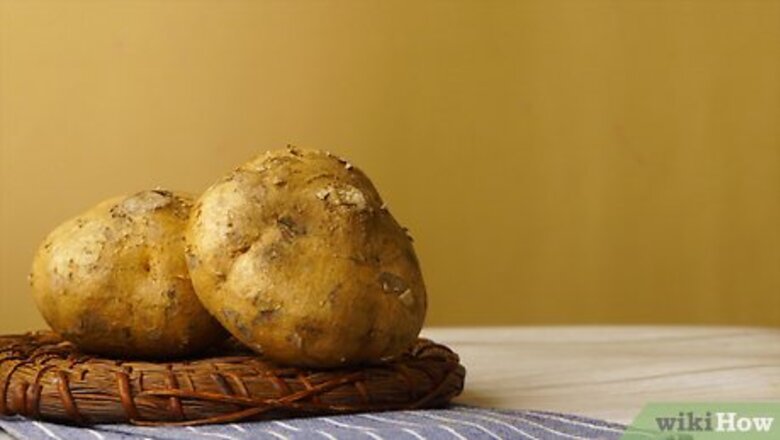
views
Choosing and Prepping Jicama Roots
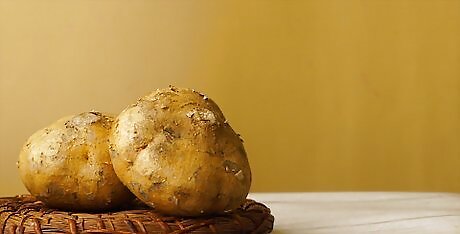
Choose a ripe jicama. You can find jicama at Latin grocery stores, health food stores, and some mainstream supermarkets in the produce aisle. Look for a small or medium-sized jicama with brown skin. It should be slightly shiny, rather than dull. Choose a root without any blemishes or soft spots. The smaller jicama are younger and sweeter. If you want a starchier taste, choose a larger jicama, though it might be a bit woody in texture. The jicama should be heavy for its size. If it feels light, it has probably been sitting there for a long time, and the moisture has started to evaporate. Jicama are not seasonal, so you should be able to find a good selection all year round.

Scrub the jicama. Use a vegetable scrubber or a clean cloth wet with water to scrub the skin of the jicama. The skin will be removed, since it isn't edible, but you want to clean off all the dirt before peeling.
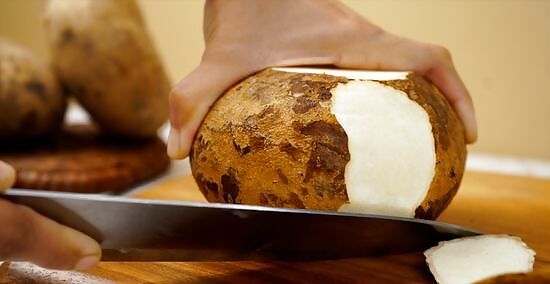
Peel the jicama. It's easy to use a potato or carrot peeler to do the job. Peel all traces of the skin from the jicama, since ingesting the skin could give you a stomach ache.
Slice the jicama. Use a sharp knife to slice the jicama into small sticks, discs, chunks, or wedges - whatever shape works for the recipe you're using. You'll find the texture to be similar to that of a potato. The flesh should be firm, without any give.
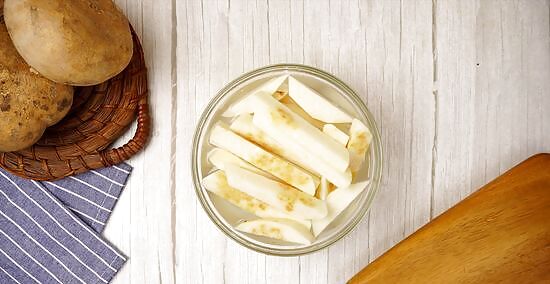
Keep the jicama fresh. If you don't immediately use the jicama, you can keep it fresh longer and avoid discoloration by submerging the processed jicama in a bowl of cold water with a squeeze of lemon juice. The citric acid in the juice will help keep the jicama in good shape for up to 2 days if you store it in the refrigerator.
Eating Raw Jicama

Add jicama to your salad. Jicama is a crunchy, flavorful, bright addition to any type of salad. Slice it into thin sticks or small cubes and simply toss it into your salad along with your other favorite mix-ins. Jicama pairs especially well with citrusy dressings. Raw jicama is great in fruit salads, dipped into salsa, lettuce-based salads, chicken salad, pasta salad, or just about any other application you can imagine.
Make jicama slaw. This popular use for raw jicama is a great accompaniment to steak or fish. Slice a small jicama into small sticks, then toss it with the following ingredients to create a delicious slaw: 1/2 head of cabbage, chopped 1 large carrot, shredded 1/2 cup lime juice 2 tablespoons vinegar 1 tablespoon honey 1/2 cup grapeseed or canola oil Salt, pepper, and other spices to taste
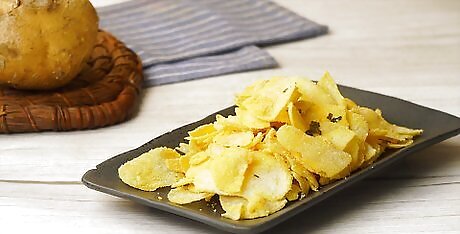
Make jicama chips. If you have a particularly ripe, sweet jicama, a great way to serve it is in the form of chips. This makes a very healthy appetizer or side dish. Simply slice the jicama into thin, bite-sized discs. Arrange them in an attractive pattern on a serving platter and squeeze lime juice over the chips. Sprinkle with salt, pepper, and chili powder.
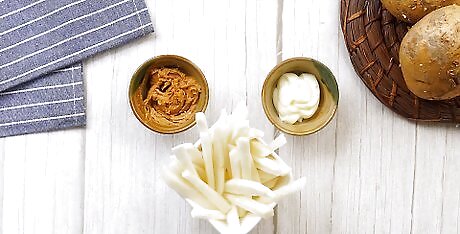
Serve jicama with dip the same way you would carrots.
Cooking With Jicama
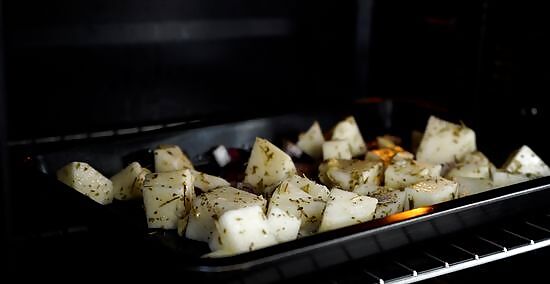
Roast a jicama. The flesh of a jicama is just as good cooked as it is raw. Roasting it makes it taste slightly sweeter. Try roasting a jicama in place of potatoes or sweet potatoes. To do so, use the following method: Preheat the oven to 400 °F (204 °C). Peel and cube the jicama. Toss the cubes with 1/4 cup cooking oil, salt and pepper, and your favorite spices. Roast the jicama cubes for 15 minutes.
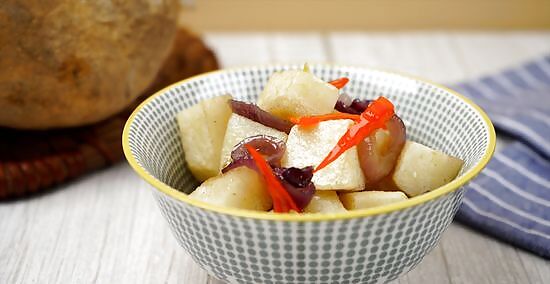
Sauté a jicama. Sauteed jicama makes for a unique and delectable side dish. Peel and cube a jicama, then heat some oil in a saucepan and Sauté the jicama until it turns golden brown. Season it with salt and pepper to taste.
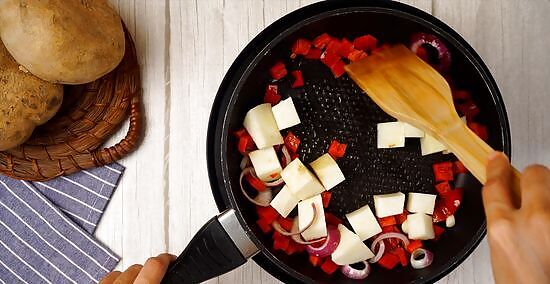
Make stir-fried jicama. Jicama is a great vegetable to substitute for water chestnuts or potatoes in a stir fry. Chop your jicama into bite-sized pieces, then add it to the frying pan with other cut vegetables like snow peas, carrots, and green beans. Dress the stir fry with soy sauce, rice wine vinegar, and sesame oil.
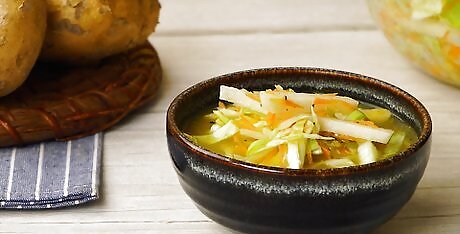
Make stewed jicama. Jicama can be added to just about any soup or stew recipe. Cut the jicama into small cubes and add it to your favorite soup recipe, or toss it the cubes in near the end of a stew's cooking time.
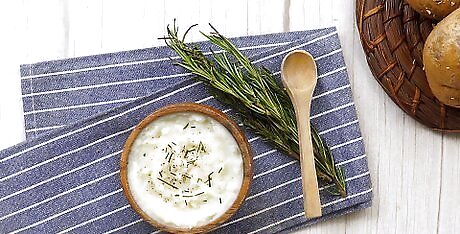
Make boiled and mashed jicama. Mashed jicama can be used as a substitute for mashed potatoes. Simply peel the jicama, then cube it and boil it in lightly salted water. Add a peeled and crushed garlic clove for extra flavor. Simmer the jicama until it is fork-tender, then drain it and mash it with a potato masher. Add butter and milk or cream and stir until the mash is light and fluffy.




















Comments
0 comment